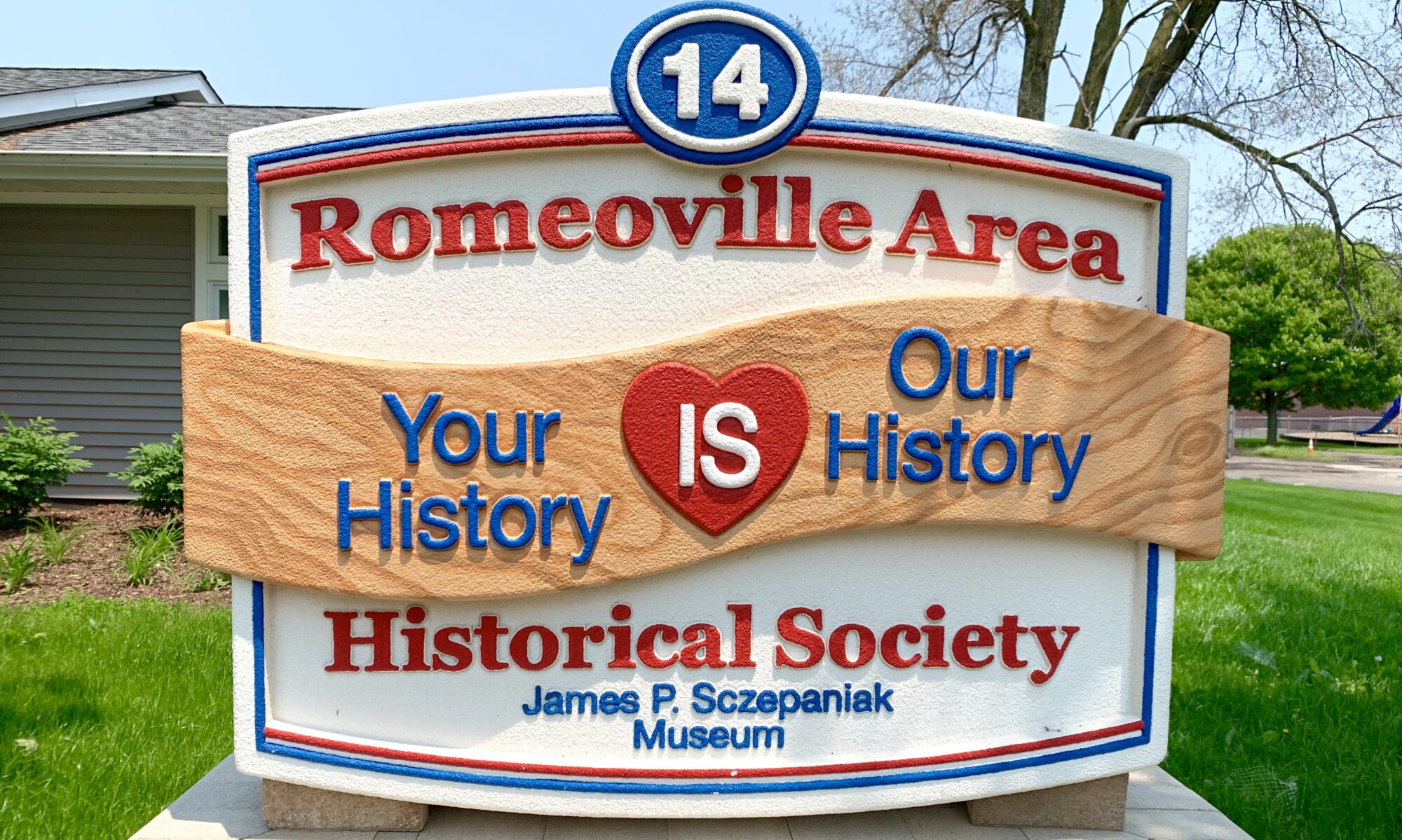
The earliest residents of Romeoville were the Potawatomi Indians, along with other tribes who traveled along the waterways. They traded with the French voyagers who also passed through the region. At the time, the area was referred to as “Fountaindale”, in reference to the freshwater springs. In 1673, French-Canadian explorer Louis Jolliet and Jesuit Father Jacques Marquette arrived. A significant number of white settlers began to arrive in the area in the late 1820s. In the early 1830s, the Indian villages were moved northwest, across the Indian boundary line, at the time of building of the I&M Canal.
In 1816, Congress decided to construct the Illinois and Michigan (I&M) Shipping Canal along the Des Plaines River. The benefits of such a canal joining the various waterways was long-earlier voiced by Louis Jolliet. The canal joined the Illinois River to Lake Michigan, connecting to the Great Lakes and out to the eastern states. Since the Illinois River connected to the Mississippi River and the Gulf of Mexico, the I&M Canal made extensive travel possible. It was completed and in use in 1848. The canal stretched 96 miles and had 15 locks. Mules pulled the boats until 1870. The canal greatly assisted agriculture in northern Illinois, connecting local farms with eastern markets. Once the I&M Canal was completed, work began on the Chicago Sanitary and Ship Canal.
Railroads began running through the area in 1854. In 1886, the Romeo depot was built by Santa Fe, which had acquired the railroad at that time. The depot was used for 50 years.
Isle a la Cache is an 80-acre island, located in the Des Plaines River at Romeo Road. The historic French voyageurs built a camp there. During the construction of the canal, a temporary post office was established on Isle a la Cache. The plot of Romeo was recorded on September 14, 1835. The residents of Isle a la Cache became part of Romeo. At some point, either in 1845 or in 1895, the name Romeo was changed to Romeoville. The Village of Romeoville was incorporated on January 19, 1895.
In 1957, over six hundred acres of farm land on the west bank of the Des Plaines River (now Route 53) was designated for the development of Hampton Park. In July, 1958, building permits were approved. The subdivision featured homes that could be built in a day. Once the foundation, sidewalk, driveway, and crawl space with utility connections were in place, trailers brought the prefabricated pieces in and put them together. Ten houses could be put together in a single day. The interior of the house, however, took several months to complete. Hampton Park’s first residents arrived in November, 1958. The population of Romeoville soared from 100 in 1956 (before Hampton Park) to 3,574 in 1960 (after Hampton Park). By the 1980s, the village bean courting housing developments and industrial growth, spurring additional population growth and jobs.
Memories…

A sign announcing Romeo is shown at the railroad switching station. The sign was seen on the way to Joliet. This photo was taken between 1845 (when “Juliet” was renamed to “Joliet”) and 1895 (when “Romeo” was renamed to “Romeoville”).

James Bingle took photos of his 1958 Hampton Park home being built. The fascinating sequence shows how quickly the development went up. With the pre-work of the foundation, crawl space, sidewalk, and driveway, his home arrived in a trailer and was started at 7:20 AM. By 10:15 AM, the walls (with built-in windows and doors) and roof trusses were installed. At the time this photo was taken, 3:40 PM, the exterior of the house was complete, and ready for the roof to be shingled. The interior of the home was finished in the weeks ahead.

The 135th Street Bridge (also known as the Romeoville Bridge and the Romeo Road Swing Bridge), across the Des Plaines River / Chicago Sanitary and Ship Canal, was the last highway swing bridge remaining from the Chicago Sanitary and Ship Canal. It was built in 1899 by the Strobel Steel Construction Company of Chicago, Illinois. The asymmetrical (bobtail) design utilized the longer east span to cross the canal and the shorter west span as the counterweight. The total weight of iron and steel in the bridge was 339,505 pounds. The counterweight was 208,100 pounds. In 1990 the bridge was found structurally unsound, was closed, and replaced. Although moved in 1996, the 135th Street swing bridge remains within sight-distance of its original location ó part of the Centennial Trail, sitting over the bike trail just north of 135th Street, near the Isle a la Cache Museum.
In the Museum

There are many historic plats of survey at the Historical Society, showing the development of Romeoville throughout the years. The excerpt at the left is from 1909. It shows (now) 135h Street at the top, (now) Route 53 near the river, and (now) Taylor Road as the major road near the bottom. The land of Peter Ward Sr. is where Lockport West High School (now renamed as Romeoville High School) will be built in 1963. Taylor School is shown in the lower right. Built in 1840, the wood-frame school was destroyed by a tornado in 1920, and rebuilt in 1923. The rebuilt school was known as the first modern school in Will County. It ceased being a school in 1954.
Romeoville Through Time
This LINK to the Will County IL GIS data viewer is perfect to see the development of Romeoville through time; aerial photos date to 1938, and parcels are on there for current reference.
